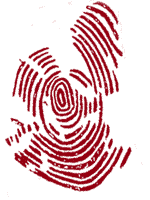 |
||
 About Stonelight |
No light at this tunnel's end - by Colm Boland The Irish Times - 22 December 1980 The man who first discovered the phenomenon of the winter solstice dawn casting sunlight into the underground chamber of the neolithic burial mound at Newgrange, Co. Meath, yesterday remained unimpressed by claims of great new discoveries by an American researcher at the neighbouring stone Age mound at Dowth. Dr. Michael J. O'Kelly, Professor of Archaeology at University College Cork, described the American researcher, who boasts qualifications in " visual communications" and scholarly knowledge, or neolithic engravings, as a nice young man. But Professor O'Kelly said that much of the researcher's claims amounted to speculation. The 38 year old New Yorker, Mr. Martin Brennan, claims to have established through his study of the sunset effect on the Dowth mound in the period surrounding yesterday's winter solstice, the shortest day of the year, that there is a previously undiscovered geometrical and astronomical design behind the layout of the neolithic mounds at Newgrange, Dowth and Knowth, near Slane, Co.Meath. Thick clouds marred the climax to Mr. Brennan's recordings of the sunset at Dowth yesterday. But Mr. Brennan said that a series of time-fixed photographs on Saturday, the eve of the solstice, had "clinched" his discoveries at Dowth. During the last week he has been making precise records of the way the sunset leading up to the solstice directs shafts of sunlight into the underground chamber at the Dowth mound. He has photographed the movement of the sunlight across ancient engravings on the stone. Newspapers reports about Mr Brennan's activities helped boost the crowd hoping to witness yesterday's sunrise at Newgrange. Part of the crowd of about 200 much too many to fit inside the chamber sang the Beatles' song "Here Comes the Sun" as they watched the winter solstice dawn before 9a.m. Professor O'Kelly said that he didn't wish to discount or belittle Mr. Brennan's researches regarding the sunset effect on December 21st at Dowth. He pointed out that he and others had already studied the sunlight in the chamber at Dowth. But he said that he believed the alignments with the sun at Newgrange could be part of a very practical scheme worked out by the agricultural community which had settled in the Boyne Valley and built these mounds about the year 3200BC. He said that it was a relatively simple matter to plot the position of the sunrise on the shortest day of the year by observing the different positions of the sun at dawn on the horizon each day. The design which brought sunlight into the chamber of this day could have been accomplished by placing wooden stakes in alignment. He said there was no abstruse geometrical or astronomical skills involved. There was no magic. Such design might also have been associated with a cult of the dead among this Neolithic community which believed that the spirits of the dead lived inside these great burial chambers. Mr Brennan has claimed that his discoveries show the Co. Meath Neolithic monuments to be much more complex and sophisticated than Stonehenge. He expressed surprise at the fact that this elaborate design had remained undiscovered until he came along. Professor O'Kelly said yesterday that there was no doubt that this Neolithic community in the Boyne Valley had been quite sophisticated. There was 200,000 tons of stone in the Newgrange mound. Professor O'Kelly said that his own measurements of the solstice sunlight in the chamber at Dowth had shown to him that the alignment were not precise. He said there was no certainty that a partial rebuilding of the roof of the chamber and restructuring of the entrance had recreated the original alignments. |
Boyne Valley Private Day Tour Immerse yourself in the rich heritage and culture of the Boyne Valley with our full-day private tours.
Visit Newgrange World Heritage site, explore the Hill of Slane, where Saint Patrick famously lit the Paschal fire.
Discover the Hill of Tara, the ancient seat of power for the High Kings of Ireland.
Book Now
Immerse yourself in the rich heritage and culture of the Boyne Valley with our full-day private tours.
Visit Newgrange World Heritage site, explore the Hill of Slane, where Saint Patrick famously lit the Paschal fire.
Discover the Hill of Tara, the ancient seat of power for the High Kings of Ireland.
Book Now
|
